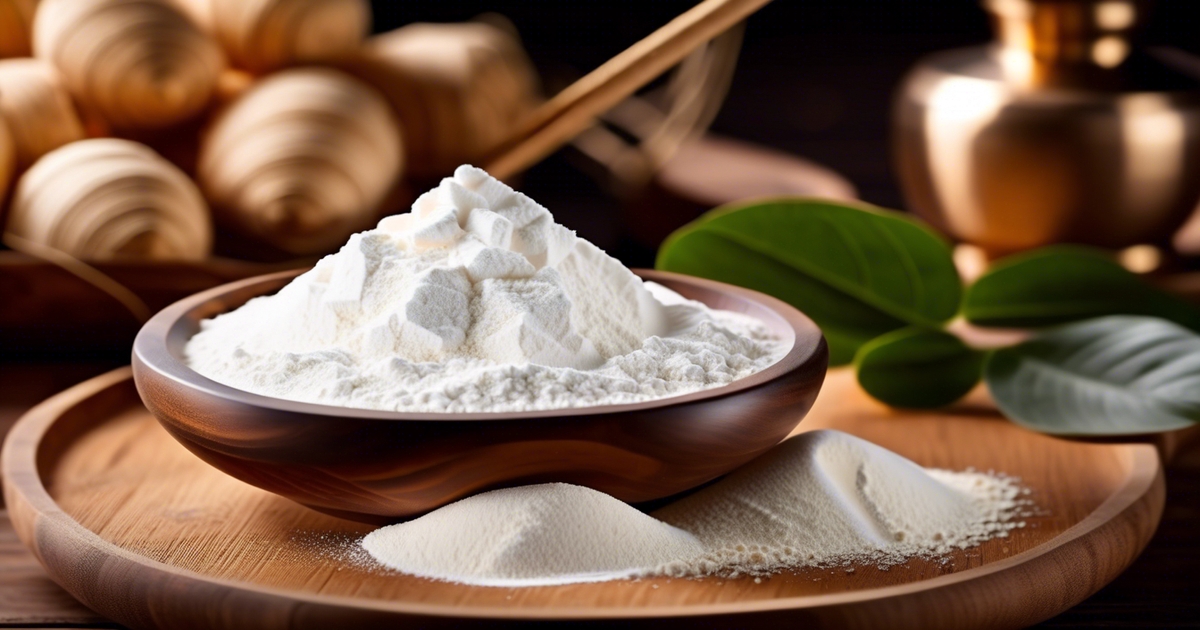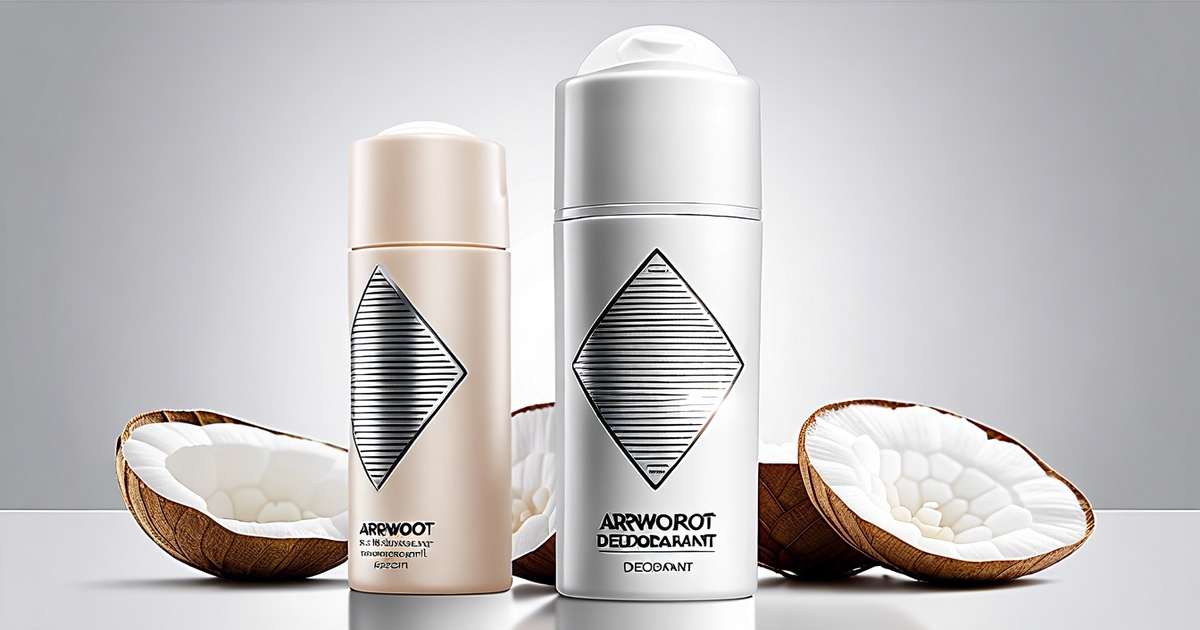Key Takeaways
- Utilize arrowroot powder in homemade deodorants for its natural absorption properties and gentle feel on the skin.
- Gather essential supplies—natural ingredients like coconut oil, shea butter, and beeswax—to create your own arrowroot-based deodorant at home.
- Follow a zero-waste deodorant recipe to minimize environmental impact and promote sustainability.
- Customize your arrowroot deodorant with preferred essential oils for personalized scents and added benefits.
- Apply arrowroot deodorant effectively by spreading a pea-sized amount on clean, dry underarms for best results.
- To enhance freshness and longevity, consider tips like storing your deodorant in a cool place and allowing it to fully dry before dressing.
Did you know that people use 500+ chemicals on their body daily? Arrowroot deodorant offers a natural option without harmful ingredients. It keeps you fresh and cares for your skin. Say no to aluminum, parabens, and synthetic scents – arrowroot deodorant keeps you odor-free while being gentle on your health. Try nature’s solution for body odor and happy skin.
Benefits of Arrowroot in Deodorants
Absorption Power
Arrowroot, a key ingredient in deodorants, effectively absorbs moisture, keeping you feeling fresh and dry throughout the day. Its natural absorbent properties make it an excellent choice for combating sweat and odor.
Skin-Friendly Formula
One of the standout benefits of arrowroot in deodorants is its gentleness on sensitive skin. Unlike some harsh chemicals found in conventional deodorants, arrowroot is a natural alternative that helps prevent irritation and soothes delicate skin, making it ideal for individuals with sensitivity concerns.
Natural Odor Control
Arrowroot offers more than just moisture absorption; it also possesses natural odor-fighting properties, making it an excellent body deodorant. Arrowroot helps keep you smelling fresh by fighting bacteria that cause bad body odors, without using synthetic scents or harmful chemicals.
Essential Supplies for Homemade Deodorant

Arrowroot Powder
Arrowroot powder is a key ingredient in homemade deodorants due to its moisture-absorbing properties. It helps in keeping the underarms dry by absorbing sweat, making it an excellent alternative to commercial deodorants.
Using arrowroot powder in DIY deodorants is beneficial for those with sensitive skin. It is gentle and less likely to cause irritation compared to other ingredients. Arrowroot powder aids in creating a smooth texture in deodorants without leaving a sticky residue.
Coconut Oil
Coconut oil serves as a binding agent in homemade deodorants, helping to hold the ingredients together. Its antimicrobial properties combat odor-causing bacteria, providing long-lasting freshness throughout the day.
When combined with arrowroot powder and baking soda, coconut oil forms a solid base for the deodorant mixture. This natural oil also moisturizes the skin, preventing dryness and irritation commonly associated with store-bought deodorants.
Baking Soda
In DIY deodorants, baking soda acts as a powerful odor-neutralizer. It works by balancing the pH levels of the skin, effectively controlling body odor by inhibiting the growth of odor-causing bacteria.
However, individuals with sensitive skin should be cautious when using baking soda, as it can sometimes cause irritation. To mitigate this, adjusting the amount of baking soda in the recipe or opting for low-sodium varieties can help prevent skin reactions.
Zero Waste Deodorant Recipe Overview
Ingredients
Creating your arrowroot deodorant involves environmentally friendly ingredients like coconut oil, arrowroot powder, and essential oils. These components, including body deodorant, not only keep you fresh but also contribute to reducing plastic waste.
The simple DIY process of making arrowroot deodorant includes melting the coconut oil, mixing it with arrowroot powder, adding a few drops of essential oils for fragrance, and pouring the mixture into a reusable container.
Benefits
- Environmentally friendly
- Customizable scents
- Plastic waste reduction
Step-by-Step Arrowroot Deodorant Making
Melting Ingredients
To make arrowroot deodorant, melt coconut oil and shea butter in a double boiler until they liquefy. This process usually takes five to ten minutes.
Mixing Process: Once the oils are melted, remove them from the heat and slowly stir in arrowroot powder. Add a few drops of your preferred essential oils for fragrance. Stir well until all ingredients are thoroughly combined.
Pouring and Solidifying
Carefully pour the mixture into clean deodorant containers. Ensure you leave some space at the top for easy application. Let the deodorant sit undisturbed for a few hours to solidify completely.
- Pros:
- Customizable with different scents
- Natural ingredients that are gentle on the skin
- Cons:
- May require reapplication throughout the day
- Texture may vary based on room temperature
Customizing with Essential Oils
Lavender
Lavender essential oil is a popular choice for arrowroot deodorants due to its calming scent. It not only masks body odor but also provides a soothing and relaxing effect on the skin. Customers love the natural fragrance it imparts to the product.
Tea Tree Oil
Tea tree oil is known for its powerful antibacterial properties, making it an excellent addition to arrowroot deodorants. Its ability to combat bacteria helps in reducing body odor effectively. Customers appreciate the use of this natural ingredient in products.
Lemongrass
Adding lemongrass essential oil to arrowroot deodorants offers a refreshing aroma that keeps users feeling revitalized throughout the day. The citrusy scent of lemongrass not only combats body odor but also uplifts the mood of individuals using the product.
Applying Arrowroot Deodorant Effectively

Thin Layer
Apply arrowroot deodorant by spreading a thin layer onto clean, dry underarms. This helps prevent any clumping or residue.
Drying Time
Allow the arrowroot deodorant to dry fully before putting it on your clothes. This ensures maximum effectiveness and reduces any potential staining.
Reapplication
If needed, reapply the arrowroot deodorant throughout the day for continuous freshness. This is especially beneficial during hot weather or high activity levels.
Tips for Long-lasting Freshness
Proper Storage
Store your arrowroot deodorant in a cool place to maintain its quality and effectiveness. Avoid exposing it to direct sunlight or high temperatures, which can alter its consistency.
Moderate Application
To ensure long-lasting freshness, avoid applying an excessive amount of deodorant. A pea-sized amount is typically sufficient for each armpit. Over-application can lead to product buildup and potential skin irritation.
Pre-Application Cleansing
Before reapplying your arrowroot deodorant, cleanse your armpits thoroughly. Washing with mild soap and water helps remove sweat, bacteria, and odor-causing impurities, allowing the deodorant to work more effectively.
Transitioning to Natural Deodorant
Adjustment Period
Expect an adjustment period when switching to natural deodorants. Your body may take time to adapt to the body deodorant without antiperspirants.
Switching from conventional antiperspirants to natural beauty alternatives can be challenging. The absence of parabens and other chemicals may initially cause increased sweating.
Detox Armpits
To aid the transition, consider detoxifying your armpits with clay masks. These masks help draw out impurities and balance the skin’s natural ecosystem.
Regular use of clay masks can alleviate any discomfort or rash that may occur during the transition phase. They promote healthier underarms while adjusting to the new deodorant.
Consistency is Key
Stay consistent with natural deodorant usage for optimal results. Apply it daily to maintain freshness and effectiveness throughout the day.
Consistency allows your body to acclimate to the new product, reducing any potential reactions or sensitivities over time. Embrace the change for long-lasting benefits.
Final Remarks
By adding arrowroot to your DIY deodorant, you get a natural option that absorbs moisture and is gentle on your skin. Follow the steps, add essential oils, and make a deodorant that fits your liking for lasting freshness. Switching to this eco-friendly choice benefits you and the environment. Make your arrowroot deodorant now, try various scents, and move towards a more natural lifestyle. Your body and the Earth will appreciate this small but important change. Begin today for a fresher tomorrow!
Frequently Asked Questions
What are the benefits of using arrowroot in deodorants?
Arrowroot helps absorb moisture, neutralizes odors, and soothes the skin. It is natural, gentle, and effective for odor control without clogging pores.
What supplies do I need to make homemade arrowroot deodorant?
Essential supplies include arrowroot powder, coconut oil, shea butter, beeswax, essential oils, and baking soda (optional).
Can you provide an overview of a zero-waste arrowroot deodorant recipe?
A zero-waste deodorant recipe involves using reusable containers and ingredients like arrowroot powder, coconut oil, shea butter, and essential oils to create a sustainable product.
How do I customize arrowroot deodorant with essential oils?
Mix your preferred essential oils, such as lavender or tea tree, with the base ingredients to add fragrance and enhance the deodorant’s antibacterial properties.
Any tips for effectively applying arrowroot deodorant?
Apply a small amount on clean underarms. Let it absorb before dressing to prevent any residue. Reapply as needed for all-day freshness and odor protection.

